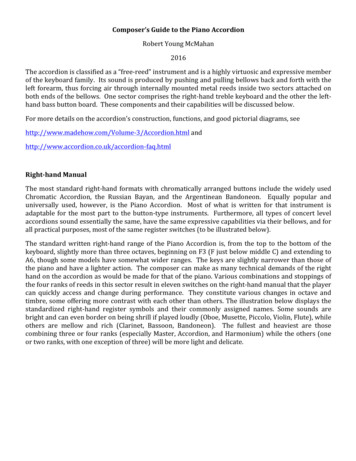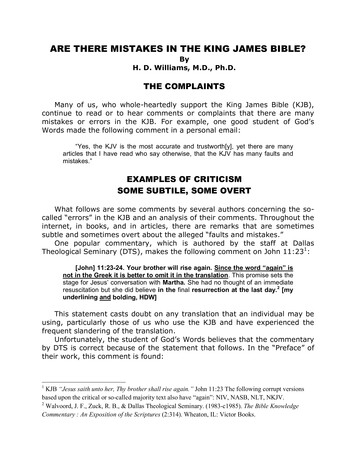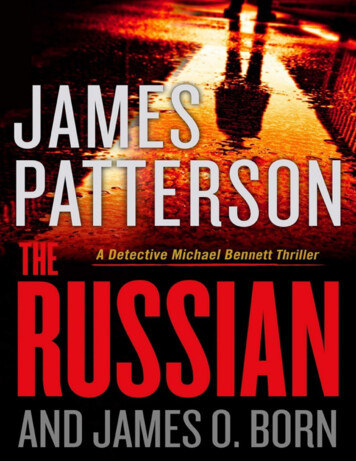
Transcription
By James D. BalestrieriNEW YORK CITY — Disclosure: I still have mycomic book collection, books from the early1970s for the most part, from what is referredto as the Silver Age of Comics, silver callingto mind the silver bullets that plagued theWerewolf By Night, calling to mind the SilverSurfer, that most cerebral and cosmic of thesuperheroes, calling to mind the Fantastic Fourand the silver temples of their leader, ReedRichards (mine are silver, too, though my abilityto stretch, as opposed to his, seems to be onthe wane). My children marvel at my MarvelComics and Classics Illustrated — now baggedand boarded in acid-free Mylar.Batman (No.1, Spring 1940), Bob Kane and Bill Finger. Published byDetective Comics, Inc, New York. Serial and Government PublicationsDivision, Library of Congress, Washington D.C.
Full disclosure: you may well see, somewherein this essay, a photo of attendees at the 2012Comic Con in New York. I was there, with myfamily, and was in a kind of makeshift getupas the Shadow, that 1930s pulp hero — “Whoknows what evil lurks in the hearts of men ”— who was the inspiration for Batman.Deep disclosure: the brief bio that closesmy writing in Antiques and The Arts Weeklyalludes to the plays, screenplays and storiesI write. It doesn’t mention the graphic novelI’ve been composing for the past three years.So I come at “Superheroes in Gotham,”the exhibition of comic book New York Gotham City Metropolis at the New-YorkMs. Magazine (No. 1, 1972). New-York Historical Society. Ms. Magazine
Historical Society, with little of the art historian’sscholarly detachment. I’m more of a celebrant andaspirant, which doesn’t mean I don’t think deeplyabout sequential art and its place in contemporaryculture. “‘Nuff said,” as the letters to and from thecreators and editors used to end at the back ofSilver Age Marvel comics like Killraven and Kull.Sequential art dominates modern visual cultureacross the globe. A bold statement? Consider this. Infilm, and increasingly in television, superheroes, theoriginal creatures of sequential art — the comic strip,comic book, graphic novel — not only conquer, butproliferate. In open-ended sequels and prequels,in standalone movies and spin-offs, larger-than-lifeheroes make and keep the world safe — and setAmazing Fantasy (No. 15, August 1962). Published by Atlas Magazines,Inc. Serial and Government Publications Division, Library of Congress,Washington D.C.
box office records. Disney, Marvel, Star Wars,these are the real Avengers. DC tastes the rareair they breathe, while Dark Horse, Valiant,IDW, Fantagraphics, First Second and otherpublishers work the edges and depths of pulp,politics, history and the vicissitudes of growingup and growing old into the form. Critics andscholars devote careers to the meaning andfunction of sequential art.(Continued on page 6C inside the E-Edition)Read Full Articleon DesktopRead Full Articleon MobileAction Comics (No. 1, June 1938), Jerry Siegel (writer) and Joe Shuster(artist). Published by Detective Comics, Inc, New York. Courtesy ofMetropoliscomics.com.
Browse MoreChasing TheWeather AwayAt The WinterAntiques ShowAmericana WeekAuction HighlightsFlagler SurveysBeauty’s Legacy In‘Gilded Age PortraitsOf America’
the wane). My children marvel at my Marvel Comics and Classics Illustrated — now bagged and boarded in acid-free Mylar. Batman (No.1, Spring 1940), Bob Kane and Bill Finger. Published by Detective Comics, Inc, New York. Serial and Government Pu










